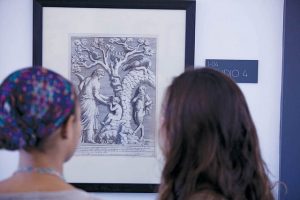
One of the great things that appealed to me when choosing to study at Kent was the range of modules available within a chosen degree, especially when you enter your second and third years of study. A subject like my own, Art History, will allow me to tailor it to my individual preferences. Assuming that the same, or similar, modules will be available when I reach the relevant year, I can choose to delve further into the Renaissance or the Baroque for example, or even explore how art relates to areas such as fashion or film. Other modules provide a more hands on approach with drawing or writing in the arts. As a bit of a Francophile, I am especially hoping to take one that focuses on Paris in the 19th century. Just think – Monet, Manet, Cezanne, Picasso, and so many more!
Now there is something else very exciting about studying at Kent that I didn’t fully appreciate until around a month or so before I started. That is, wild modules! I believe it varies between degree subject so they can’t always be taken, but when they can, it allows you study a module from a different school if desired. This year alongside my three 30 credit modules and a 15 credit one, all in the arts, I have opted for a 15 credit module on French cinema. Did I mention I love France? But I also have a growing interest in French movies too. And as for my other passion, photography, I will be fingers crossed next year that I can take a practical module on digital photography and image editing.
I believe that this kind of flexibility allows for a much more engaging form of study, and means that you study certain topics because you want to, and not because you have to. It also surely means that you are more likely to achieve the type of career you desire. For example, one person’s Art History degree that includes a module on curating may lead them to working in galleries or museums, where another person’s degree with more practical based modules may assist them in a career as an artist or photographer. It’s all in the choosing!
